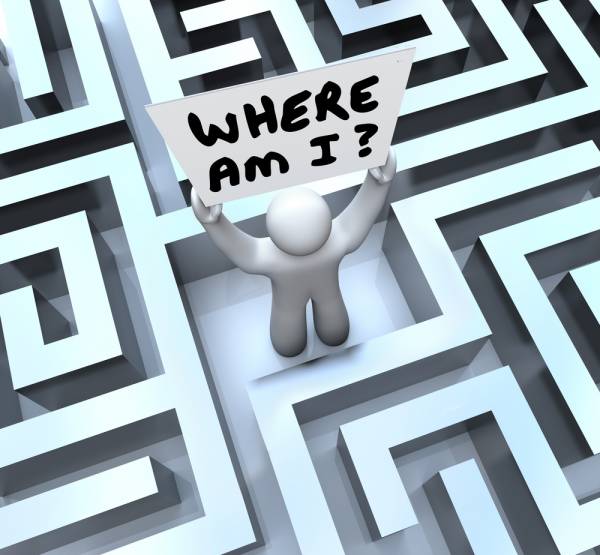“Happiness is not a matter of intensity, but of balance, order, rhythm, and harmony.”
– Thomas Merton
It’s perhaps a bit overused as a word – balance. It’s also a darn tricky concept to optimize in one’s life. It seems that when one pillar of our life goes strong, say our professional life, our family life or health and wellness suffers as a consequence. We also put a lot of value into things that are not necessarily balanced in their inherent nature – money, fame, and aesthetic beauty, to name a few.
Take the concept of money. We all know the adage that money is the root of all evil. Of course there is nothing wrong with wanting money, as anyone who has gone without it can attest to. It’s that putting too much emphasis on any one thing puts our life in imbalance. The desire to obtain wealth and money just happens to be a glaring example that is prominent in our culture. This also holds true as it relates to our lives in fitness and sport.
Nothing about our society seems in balance, from our income disparity to our educational system to our waistlines. In this three-part series of articles I have pointed out that the root of pain stems also from a lack of balance. I have also pointed out that this balance isn’t just physical, it is also mental. The two are interconnected and we ultimately must achieve the proper equilibrium between these realms to truly succeed.
I have wrestled for many years with the question of what balance is and how to achieve it. First comes the recognition that we don’t have it. This starts with checking in with our health, our most valuable possession. If our health is suffering, that is a strong indicator our life is not balanced. Second, take stock of the people around you. “Who is on my team” and “How is my team doing?” are questions you might ask. If your bench is depleted and your relationships suffering, that’s a good indicator that balance is lacking. Still, some of us still don’t see these cues. It’s a practice to really listen to our thoughts and feel our bodies. Meditation is a good way to practice this observation.
After our observations and balance self-diagnosis, then comes the uncomfortable task of achieving balance. Here are a few tips to get you moving in the right direction:
Opposites Attract
First, physically, address your stress level. Are your adrenals healthy? Are you getting plenty of sleep? See a good counselor or naturopath and get working on it. If you have too much stress, you obviously need less of it, but the opposite is also true. A sedentary body needs more movement, just like a body that moves too intensely will break down if not balanced with the right slower activities.
 With this in mind, address your activity level and then find a good coach, teacher, school, or trainer. For years it has been my job to help 90% of people push themselves harder. That is, higher heart rates, more intensity, and more resistance. However there are also those of us ‘10 percenters’ who push too hard. If you move too much, find pure aerobic activities like a long walk or hike or slow bike ride. If you’re naturally the slow-moving type, then challenge yourself and find good interval based exercise like spin cycling or heart rate based interval training and get comfortable with being uncomfortable. Either way the body needs to strike this balance – stressful activities with less stressful. Whatever you do lots of, find it’s opposite and mix that in. Your body will thank you and you will also see better results.
With this in mind, address your activity level and then find a good coach, teacher, school, or trainer. For years it has been my job to help 90% of people push themselves harder. That is, higher heart rates, more intensity, and more resistance. However there are also those of us ‘10 percenters’ who push too hard. If you move too much, find pure aerobic activities like a long walk or hike or slow bike ride. If you’re naturally the slow-moving type, then challenge yourself and find good interval based exercise like spin cycling or heart rate based interval training and get comfortable with being uncomfortable. Either way the body needs to strike this balance – stressful activities with less stressful. Whatever you do lots of, find it’s opposite and mix that in. Your body will thank you and you will also see better results.
Personally, for years I have thrown a lot of punches. The intensity takes its toll. I have found a good balance with boxing and yoga. Boxing suits my disposition and nature, while my body feels better and more relaxed when I find ability to slow down and get mindful with yoga. (Though I have gotten in trouble shadow boxing in between poses!)
Of course, there is also the question of balance training in and of itself. Here is yet another paradox: the best way to find balance is to get the body off balance. The internal arts and yoga are excellent ways literally and figuratively to work on balance.
Get Uncomfortable
I had a meeting recently with my boss. We were talking about a couple of my clients who aren’t my favorite to work with. I had more or less decided they weren’t worth my while and my boss then wisely reminded me that those who make us uncomfortable can be some of our greatest teachers. As much as I hated admitting it, my boss was right (probably why she is the boss) and so with humility I reached out to those clients I had let fall off. I recognized there were things there yet to learn and grow from. I know I almost always grow from the events, physical activities, and people that make me the most uncomfortable. Just make sure you balance those situations and people with downtime and people who help you relax.
Take Stock and Then Break the Cycle
 When your environment changes, you change with it. After moving to Colorado last year, I forgot to consider things like water intake. Living at a mile high and in a drier climate, my body requires more water than it previously did and once I started drinking more, I felt better. First I took stock of my environment. It seems simple enough but finding answers to an elusive concept can start with simple questions like, “Where am I?”
When your environment changes, you change with it. After moving to Colorado last year, I forgot to consider things like water intake. Living at a mile high and in a drier climate, my body requires more water than it previously did and once I started drinking more, I felt better. First I took stock of my environment. It seems simple enough but finding answers to an elusive concept can start with simple questions like, “Where am I?”
Additionally, you need to change your environment in order to achieve balance. If you’re running a lot, you need to balance that activity with lots of elongating or cross training. Repeating the same thing over and over is a way to get proficient at something, but it is also a way for body and mind to get stagnant and out of balance. As Einstein said “Life is like riding a bicycle. To keep your balance you must keep moving.” He didn’t mean do the same thing over and over again until you find balance.
The human paradox is interesting in that we must change to grow, and we must grow or we die. Yet, we are also creatures of habit and comfort seekers. The key is to recognize this within ourselves and see when our equilibrium is off. Again, observing our health and relationships is a good indicator of our balance. Next comes taking stock and making adjustments within our environment and finally, making changes to our environment. It’s easier said than done, but worth fighting for.
Photos courtesy of Shutterstock.






